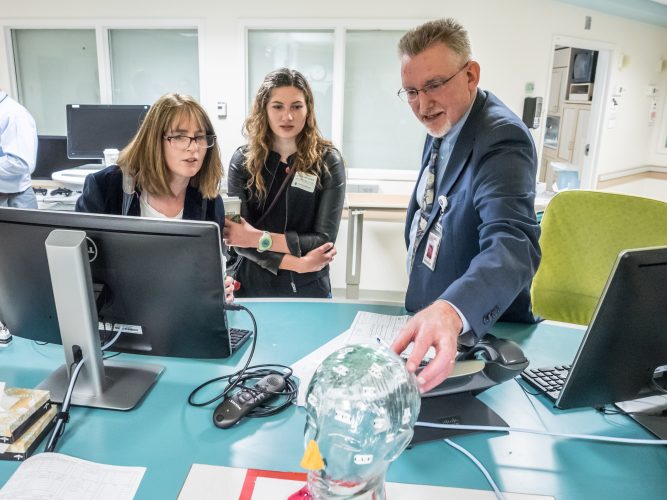
New research and treatments for epilepsy have come a long way in the last several years. In this Q&A, we talk with Dr. Edward “Rusty” Novotny, director of Seattle Children’s Epilepsy Program and professor of neurology and pediatrics at the University of Washington. As the director of one of the largest epilepsy programs in the nation and the program exclusively dedicated to pediatrics in the Northwest accredited level 4 by the National Association of Epilepsy Centers, Dr. Novotny answers questions about advances in epilepsy treatment.
Q: What are some recent advancements in the field of epilepsy?
The role of genetics and genomics in identifying the causes of epilepsy is a growing area of research that leads directly to better, more personalized treatments. Our Neurosciences Center combines multidisciplinary clinical care, rapid genetic testing, and pioneering research to identify the genetic cause of a child’s condition to provide an individualized approach to treatment. We provide rapid, customized, next-generation gene and genome sequencing through our partnership with the University of Washington. Our interdisciplinary epilepsy genetics clinic has identified new genetic causes of epilepsy and facilitated genetic testing to be obtained. This has resulted in early diagnosis and an end to the “diagnostic odyssey.” Our researchers were among the first to identify a group of genetic mutations attributed to brain malformations, cognitive delays and epilepsy. Since many existing drugs target the pathway, their discoveries opened the floodgates to finding better therapies for epilepsy.
Q: What new treatments have you found to be effective?
Seattle Children’s is unique in our use of the most advanced guided imaging tools and techniques such as functional Magnetic Resonance Imaging (fMRI), which targets the pediatric population. We were also among the first in the nation — and remain leading among pediatric hospitals — to offer laser ablation for the treatment of refractory epilepsy and brain tumors. We have been performing this minimally invasive procedure since 2013 with effective outcomes for our pediatric population. A typical neurosurgery operation would have you remove the bone and do a craniotomy to get to the brain. Now, with laser ablation, you drill a 3 mm hole in the skull and use image-guided algorithms to get the probe into the right place and ablate the source of the seizures.
Seattle Children’s is also at the forefront of using the image-guided placement of stereoelectroencephalographic electrodes (SEEG) and the use of responsive neurostimulation and deep brain stimulation for the treatment of refractory seizures. And, we’re researching ways to use new multimodal imaging techniques and advanced signal processing of EEG and SEEG to guide epilepsy surgery.
Q: What new research is on the horizon?
Seattle Children’s has always been at the forefront of new research and technologies. Seattle Children’s Center for Integrated Brain Research is a centralized, standalone program that links our basic science discoveries about the brain to other pediatric issues, such as cardiology, pulmonology, neonatology and epilepsy.
Our novel phase 1 study is currently underway for patients with treatment-resistant epilepsy to determine if the addition of a drug that reduces the effects of the mutation to continued antiepileptic medications results in improved epilepsy control that’s safe and well-tolerated. This experimental therapy is known to target the underlying genetic cause of medically refractory epilepsy. Our epilepsy group is involved with many clinical trials of novel medications and therapies that are targeted to children.
Seattle Children’s has worked to create a culture and infrastructure to nurture innovations, share them with patients and introduce them into clinical practice. We’re not satisfied with the status quo and realize there are opportunities through research and new clinical programs to advance care compared to what it is right now. Today’s state-of-the-art care won’t be the state-of-the-art care in two, five or 10 years. From refining surgical techniques to testing new treatment strategies, we lead efforts to improve care so every child can live the healthiest, most fulfilling life possible.
Providers can call 206-987-2016 or 844-935-3467 (toll-free) about patients who need attention right away. Information on patient eligibility for our phase 1 study is available at 206-987-1697.

